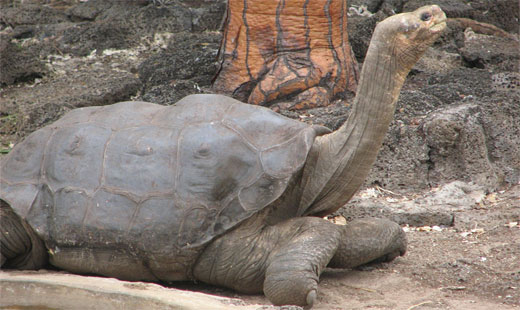
December 28, 2013 marked the 40th anniversary of the Endangered Species Act. It was signed into law as a way to better handle wildlife conservation, and in response to the near-extinction of bison and the total extinction of the passenger pigeon in the early 1900s.
As of late, the Act has encountered obstacles and outright attacks, and in an atmosphere where climate change and environmental havoc are growing problems, more and more animals have gone extinct in recent years.
But since 2001, the number of species listed has been truncated. Revisions to longstanding policies caused the Act to focus only on endangered animals’ current locations, rather than their former ones. This meant that no further efforts would be made to restore those species to the habitats from which they were now missing; this could ultimately circumvent the efficacy of the Act, as endangered species will, after all, slowly disappear from more and more locations.
The most recent problem has been the delisting of species formerly under the Act’s protection. The most significant of these is the gray wolf, which was delisted in 2011, despite the fact that the gray wolf population is at an all-time low. And in 2013, the U.S. Fish and Wildlife Service proposed to strip further federal protections from them, such as allowing them to be hunted in areas where they formerly enjoyed protection from such activity. Wolves can now be shot on sight in 80 percent of Wyoming, with the goal being to reduce their population to 100 there.
Experts have shown that this is wrong not only from a political, but also a scientific standpoint. Noah Greenwald, the Center of Biological Diversity’s endangered species director, remarked, “Taking federal protection away from wolves will bring about senseless slaughter. It flies in the face of all the best research that’s been done in recent years. Just in the short time we’ve allowed wolves to return and reclaim their ecological role, they’ve quickly demonstrated that they’re an irreplaceable keystone species.”
As the efficiency of the Endangered Species Act is gradually reduced, the dangers that have always plagued species (climate change, human interference, environmental destruction) are suddenly made that much more dire. Here are five important species that were officially declared extinct within the past several years:
5. Northern Darwin’s Frog
This species of frog, which lived only in Chile, is now considered extinct. The last living specimen was seen in 1980. It is no coincidence that rapid deforestation occurs in Chile.
4. Formosan Clouded Leopard
This feral cat, native to Taiwan, has been deemed extinct after not being seen for over 30 years, and after the failure of a recent 13-year effort to document one. Their obliteration is owed to the human-caused decimation of their habitat and the killing of them for their fur.
3. Eskimo Curlew
These birds were once highly populous in the tundras of Canada and Alaska, but they haven’t been seen since 1963. The last photograph taken of one occurred one year prior. Their extinction was caused by overhunting and, indeed, the last known specimen was killed by a hunter.
2. Pinta Island Tortoise
Perhaps some of the most amazing examples of their kind were this species of tortoise. Native to the island from which its namesake is derived, this species had long been thought of as the exemplar for the need for better conservation efforts. For the last forty years, it was represented by the last of its kind, a single tortoise named Lonesome George, who was long considered the rarest animal in the world. Unfortunately, he died in 2012 from old age (he was over 100 years old). Again, this extinction was due to overhunting.
1. Western Black Rhino
Finally, the most devastating extinction has been that of the Western Black Rhino, which owes its demise solely to unchecked profit-driven poaching. This is more devastating when one considers the fact that there were 2,300 of them in 2001. But it was viciously hunted for its horn, which some in China and Vietnam falsely believe holds medicinal properties. In 2011, it was confirmed that that number had been reduced to zero, and the International Union for Conservation of Nature formally declared the species extinct. Other branches of the black rhino species still remain, but are also in grave danger. Consider that there are only 2,900 rhinos (of any species) remaining worldwide. Poaching, on the other hand, continues to run rampant, especially in South Africa.
In light of these harsh facts, the importance of the Endangered Species Act – and the further federal protections it inspires – is paramount.
Rachel Santymire, director of the Davee Center for Epidemiology and Endocrinology at the Lincoln Park Zoo in Chicago, said she sees the positive impact of the Endangered Species Act ever day she goes to work. “It’s one of the best things we’ve done for our environment,” she said. “We have to preserve the habitat to save the species.”
She currently works with black-footed ferrets – highly endangered animals in North America. Only 400 remain in the wild, and she is certain that would not be the case if not for the Endangered Species Act. “The black-footed ferret is the flagship species for the Endangered Species Act. We’ve produced over 8,000 of them [in captivity]. This is a species that serves as a shining example of how successful the Endangered Species Act can be.”
Photo: Lonesome George, the last of his species, was over 100 years old when he died in 2012. Wikipedia/Flickr (CC)












Comments